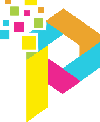In the modern educational landscape, social platforms have become essential tools for bridging the gap between students and teachers. These digital platforms provide more than just a medium for communication; they foster collaboration, enhance engagement, and create a space for personalized learning experiences. By connecting students and teachers through these platforms, the educational process becomes more interactive, inclusive, and dynamic.
The Role of Educational Social Platforms
Educational social platforms are designed to facilitate seamless communication and collaboration between students and teachers. Unlike traditional social media, these platforms are purpose-built to support educational goals, offering tools that enhance the teaching and learning experience. They include features such as discussion forums, collaborative documents, real-time messaging, and multimedia sharing, all aimed at fostering a more connected academic environment.
Popular educational social platforms include Google Classroom, Edmodo, and Moodle, each offering unique functionalities to support classroom management, assignments, and student-teacher interaction.
Key Benefits of Educational Social Platforms
1. Enhanced Communication
Educational social platforms allow for real-time communication between students and teachers, breaking down the barriers of traditional classroom settings. Teachers can answer student queries, provide feedback on assignments, and offer guidance in real time. This constant access to support ensures that students can clarify doubts promptly and feel more connected to their teachers.
2. Collaborative Learning
These platforms promote collaborative learning by enabling students to work together on group projects, share resources, and discuss ideas outside of classroom hours. Features like shared documents, discussion threads, and peer feedback allow students to contribute collectively to academic tasks, helping them learn from each other while building essential teamwork skills.
3. Personalized Learning
Teachers can use educational social platforms to tailor learning experiences to individual students’ needs. By providing personalized assignments, offering targeted resources, or giving specific feedback, teachers can address each student’s strengths and weaknesses. This level of personalized attention helps students learn at their own pace and ensures that no one falls behind.
4. Increased Engagement
The interactive nature of social platforms keeps students engaged in the learning process. Teachers can share multimedia resources, such as videos, quizzes, and presentations, to make lessons more dynamic and engaging. The ability to interact with course materials in a variety of formats appeals to different learning styles and helps maintain students’ interest.
5. Accessible Learning Anytime, Anywhere
One of the greatest advantages of educational social platforms is their flexibility. Students can access learning materials, submit assignments, and participate in discussions from anywhere and at any time. This level of accessibility is especially beneficial in a world where remote learning has become increasingly common, allowing students and teachers to stay connected regardless of physical location.
How Educational Social Platforms Empower Teachers
Educational social platforms empower teachers to streamline their classroom management and provide more effective instruction. These platforms offer a centralized space for managing coursework, grading assignments, and monitoring student progress, which helps teachers stay organized and efficient.
Additionally, teachers can use the data and analytics provided by these platforms to gain insights into student performance. By tracking participation, engagement, and assignment completion rates, educators can identify areas where students may need additional support and adjust their teaching strategies accordingly.
Facilitating Student-Centered Learning
Social platforms also encourage student-centered learning, where students take a more active role in their education. Teachers can create opportunities for students to lead discussions, share their own research, or present projects to their peers. This shifts the focus from passive learning to active engagement, empowering students to take ownership of their education.
Building Stronger Teacher-Student Relationships
One of the key outcomes of using educational social platforms is the strengthening of teacher-student relationships. These platforms create a more open and accessible line of communication, allowing teachers to connect with their students on a deeper level. The continuous feedback, mentorship, and interaction provided through these platforms help foster trust and rapport, contributing to a more positive and supportive learning environment.
Providing Emotional and Academic Support
Beyond academics, teachers can also use these platforms to provide emotional support to students. Whether it’s through private messaging for one-on-one check-ins or discussion threads that promote community building, teachers can ensure that students feel supported both academically and emotionally.
Challenges and Solutions
While educational social platforms offer numerous benefits, there are also challenges that need to be addressed for successful implementation:
- Technology Access: Not all students have equal access to technology or reliable internet connections. Schools and educators must work to ensure that all students can participate in online learning by providing resources or alternatives where necessary.
- Privacy and Security: Protecting student data is crucial when using digital platforms. Educators must choose platforms with strong security features and ensure that both students and teachers are aware of best practices for maintaining privacy online.
- Maintaining Academic Focus: As these platforms blur the lines between social interaction and academic work, it’s important for teachers to set clear guidelines on their usage to ensure that students stay focused on learning rather than being distracted by non-academic content.
The Future of Educational Social Platforms
As technology continues to evolve, the role of educational social platforms in connecting students and teachers will only grow stronger. With the integration of artificial intelligence, adaptive learning systems, and virtual reality, these platforms will become even more personalized and immersive, offering students and teachers more innovative ways to interact and engage.
Furthermore, as blended learning models become more prevalent, these platforms will serve as the backbone of the modern classroom, providing a seamless transition between in-person and online learning experiences.
Conclusion
Educational social platforms have transformed how students and teachers connect, collaborate, and learn together. By fostering real-time communication, promoting collaborative learning, and enabling personalized education, these platforms have revolutionized the educational experience. As technology continues to advance, these platforms will remain a vital component of modern education, creating a more connected and interactive learning environment for future generations.

